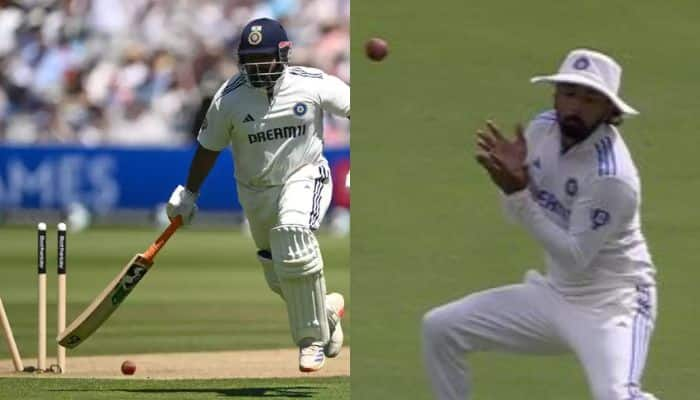After five pulsating days of top-tier Test cricket at the iconic Lord’s Cricket Ground, England edged past India by a narrow margin of 22 runs in the third Test of the five-match Anderson-Tendulkar Trophy series. Despite a valiant fightback from Ravindra Jadeja, India’s lower order and strategy collapses cost them dearly. From poor shot selection to conceding extras and a costly run-out, here are the five key reasons why India let the game slip away.
1. A Defensive Approach in a Doable Chase
Chasing 193 in the fourth innings on a tricky surface is never easy, but it was still within reach for a side as experienced as India. However, the visitors walked out with an overly cautious mindset. Openers Yashasvi Jaiswal (0) and Shubman Gill (4) showed poor judgment against the moving ball. Karun Nair, too, failed to build on his start. While KL Rahul’s 39 and Jadeja’s 61 off 181 kept hopes alive, their defensive tactics allowed England’s pacers—especially Jofra Archer and Ben Stokes—to dictate terms. The momentum was never fully with India, and the timid batting approach ended in heartbreak.
2. The Pant-Rahul Run-Out: A Momentum Killer
India were cruising at 248/4 in the first innings, with Rishabh Pant looking in sublime touch on 74. But a moment of miscommunication led to a reckless run-out involving KL Rahul. The vice-captain’s departure triggered a collapse as India crumbled to 287 all out. This not only denied them a potential 50–100 run lead but also psychologically shifted the balance in England’s favor. As Shubman Gill admitted in the post-match press conference, “Had we secured that lead, we could’ve put England on the back foot.”
3. Top-Order Failures and Nightwatchman Gamble Backfiring
India’s top order has been the backbone of their recent success, but at Lord’s, they faltered spectacularly. Jaiswal’s impulsive hook off Archer and Gill’s indecisiveness left India tottering early in the chase. Karun Nair, under pressure to cement his place, showed flashes of intent but couldn’t convert. The decision to send Akash Deep as nightwatchman late on Day 4 also misfired, costing India a crucial wicket without adding stability.
4. Dropped Catch of Jamie Smith: A 100-Run Mistake
On Day 2, when England were 271/7, a simple drop by KL Rahul gave Jamie Smith a lifeline. The English wicket-keeper made India pay with a quickfire 51, adding over 80 runs with Brydon Carse (56). This lower-order resistance pushed England’s total to 387—exactly the kind of gritty tail-end performance that India lacked. Rahul’s drop was more than a fielding lapse; it shifted the momentum and added runs India could ill afford to concede.
5. Extras: India’s Silent Executioner
India conceded a staggering 63 extras—31 in the first innings and 32 in the second. On a pitch that offered late seam movement, Dhruv Jurel struggled behind the stumps. England’s second-innings extras (32) were their third-highest contributor after Joe Root and Ben Stokes. In a match decided by just 22 runs, such undisciplined bowling and keeping made the difference between glory and defeat.
Jadeja’s Grit: Heroic or Hesitant?
Jadeja’s 61 off 181 balls was his slowest Test fifty—an innings filled with grit but also criticism. While some praised his patience in shielding the tail, others, like Ravi Shastri, felt he lacked urgency at key moments. In hindsight, perhaps a more balanced approach—defense with calculated aggression—might have helped.

